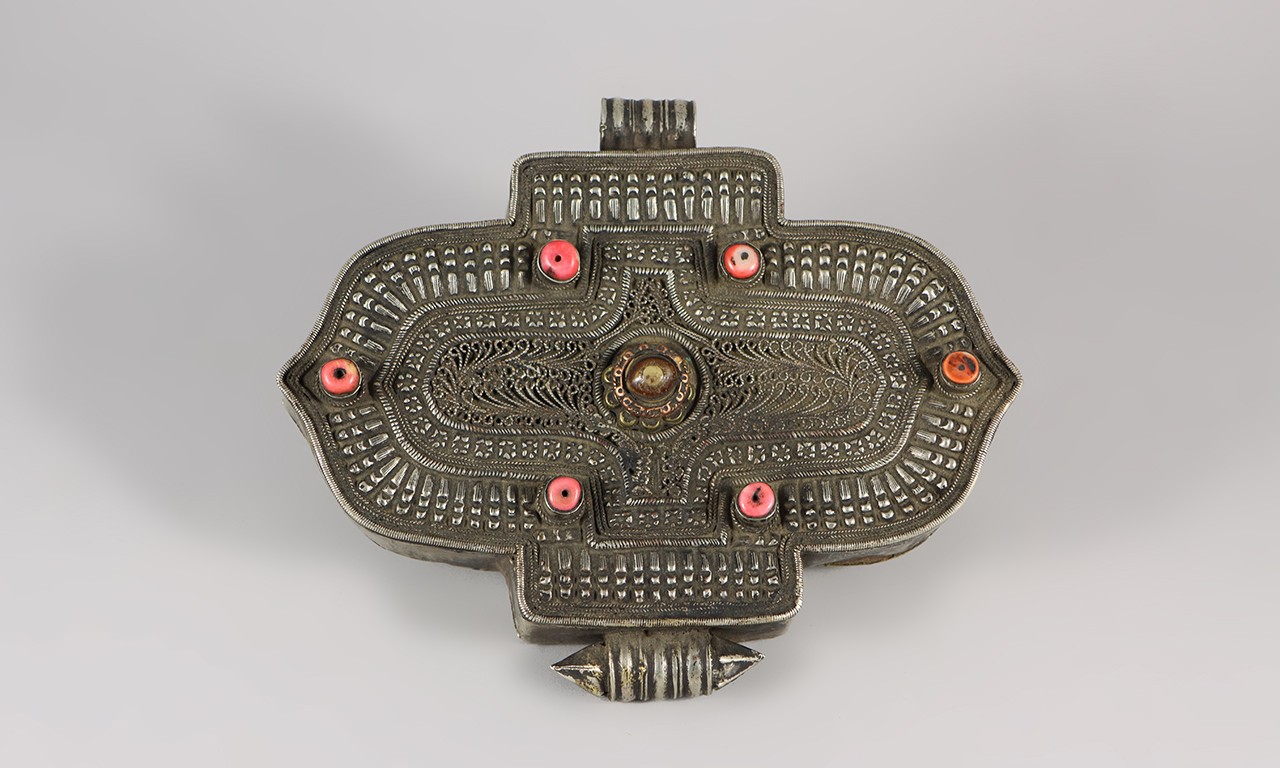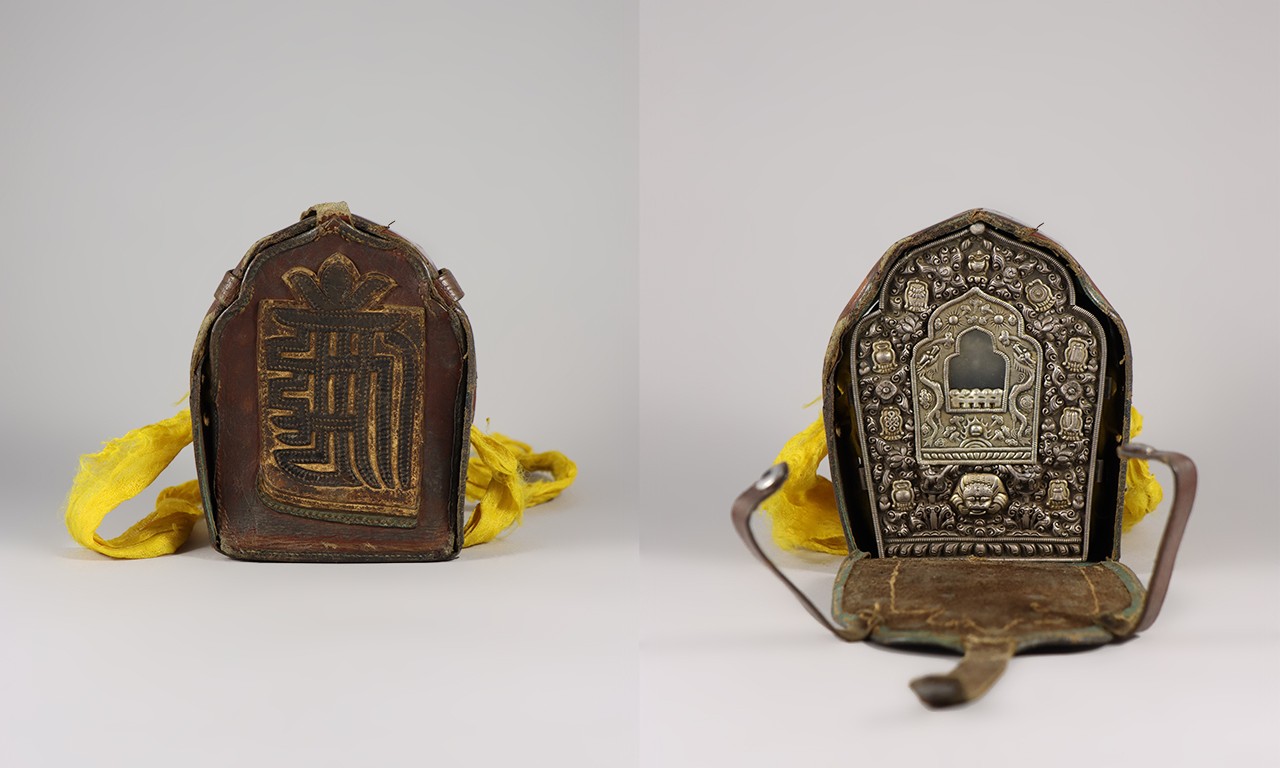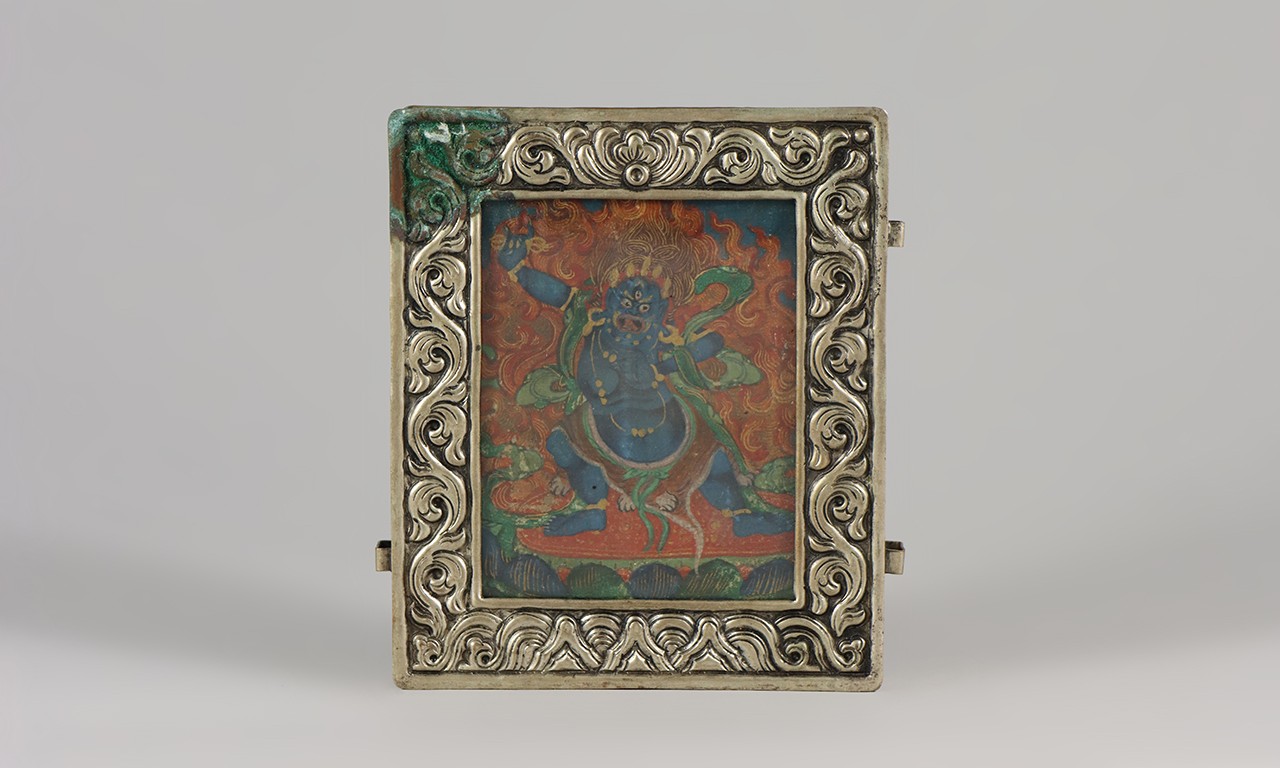2002 North Main Street
Santa Ana, California 92706
TEL: 714.567.3600
On the Gau: A Look at Tibet’s Portable Shrines
 |
| Amulet Box (Gau or Gawu), 19th to 20th Century Tibet Autonomous Region Brass; 4 1/4 × 3 7/8 × 1 3/8 in. 2021.8.52 Gift of Anne and Long Shung Shih |
Warding Wardrobe
In cultures that believe in the existence of supernatural forces in humans’ day-to-day lives, important steps are taken to ensure that individuals are protected from the unseen as well as the seen. Among the cultures of Tibet, one of the forms that this traditionally took was the wearing of gau (or gawu), receptacles filled with amulets that have the ability to protect the wearer from evil and maladies. This post takes a close look at the various forms of Tibetan gau and explores their use, manufacture, and the symbology of both the boxes and the amulets that they contain.
 |
| Amulet Box (Gau or Gawu), 19th to 20th Century Tibet Autonomous Region Silver, brass, copper and coral; 5 1/4 × 6 3/8 × 1 3/8 in. 2021.8.50a,b Gift of Anne and Long Shung Shih |
Potent Portables
Though all broadly falling under the umbrella of protecting individuals as mobile shrines, gau could serve myriad roles depending on factors such as the shape of the container, their decoration, and what they held. The boxes were made to be worn on one’s person, and for this reason always have at least one loop somewhere on them so that they can be tied to clothing. In many ways the accessories are mechanically similar to Western lockets in that they have a hinged opening apparatus. When gau have windows for viewing their contents, they often contained ceramic votive figures called tsha-tsha, metal votive figures, or paintings of Buddhas, protective deities, or lamas. Pilgrims to any of the thousands of monasteries in Tibet wore gau to call upon the deities, often bodhisattvas, contained within to protect them from evil entities. Those hoping to address a specific issue such as a chronic illness would usually wear a gau with a prayer and healing herbs prescribed by lamas in it.
 |
| Amulet Box (Gau or Gawu), 19th to 20th Century Tibet Autonomous Region Gilt silver alloy, leather and silk; 6 × 4 1/4 × 1 5/8 in. 2021.8.49a-c Gift of Anne and Long Shung Shih |
On The Gau
There are several different styles of gau represented in this post, each decorated with its own symbolism. The amulet boxes that taper towards the top are designed to look like single lotus petals, symbols of purity in Tibetan Buddhism. Both are fronted with decorations of the eight auspicious Buddhist symbols: the dharma wheel, lotus, endless knot, victory banner, parasol, pair of golden fish, treasure vase, and right-turning conch shell. One of the two is also filled with three votive figures that have been identified as Mañjuśrī, a bodhisattva associated with wisdom; Vajrapāṇi, a bodhisattva symbolizing Buddha’s power; and Avalokiteśvara, a bodhisattva that is associated with mercy and compassion. The leather case of the other lotus-petal-shaped gau was machine-made in a British or German style and decorated with the Kālachakra Tenfold Power symbol, ten characters superimposed over one another as a mantra representing the wheel of time, elements, aspects of the Buddha, and more—it is one of the most pervasive symbols in Tibetan Buddhism.
 |
| Amulet Box (Gau or Gawu), 20th Century Tibet Autonomous Region Silk, glass and silver; 4 × 3 1/2 × 1/2 in. 2021.8.55a,b Gift of Anne and Long Shung Shih |
The second variety of gau in this post is a closed, windowless container with an ornately decorated lid. The coral that was used here appears with frequency on Tibetan adornments and would have been traded there from the Mediterranean Sea by way of the Silk Road. The last style of gau is narrow, glazed frame filled with a painting of Vajrapāṇi.
 |
| Votive Sculpture (Tsha-Tsha), 19th to early 20th Century Tibet Autonomous Region Clay and pigment; 3 1/8 × 1 1/2 × 3/4 in. 2021.8.47 Gift of Anne and Long Shung Shih |
Emotive Votive
The production of these pieces in Tibet is still carried out today in a similar way to how it has been done for over a thousand years. The figural bronze work seen in tsha-tsha begins by first by sculpting a model of the final cast piece in clay, then making a plaster mold which can be used to make a model in wax, then creating a second clay mold around the wax model so that when metal is poured in the wax is melted and flushed out. Small clay tsha-tsha are shaped using bronze stamps or molds, and larger pieces are sculptured and then fired. The tsha-tsha featured above is of Avalokiteśvara. Amulet boxes themselves can be made from a variety of metals including gold, silver, bronze, and a number of alloys designed to mimic those metals. Most of their ornamentation comes in the form of repoussé and chasing work, and from adding coral and turquoise inclusions. Because of the cultural importance of silver, and its symbolic role of protection, metalworkers who created votive figures and gau boxes were afforded higher status than blacksmiths. The manufacture of the votives itself was often done while reciting relevant mantras and contemplating the importance of the figures, making it a merit-accumulating action—one that improved the quality of one’s next life and helped lead to the ultimate enlightenment of the craftsmen.
Text and images may be under copyright. Please contact Collection Department for permission to use. Information subject to change upon further research.

Comments